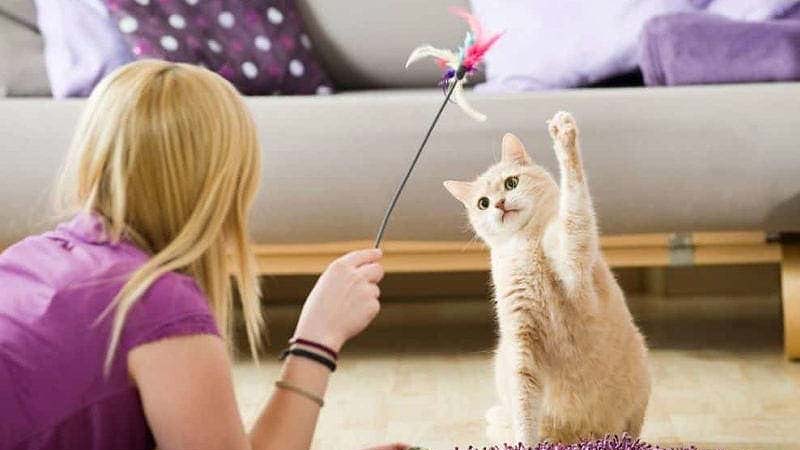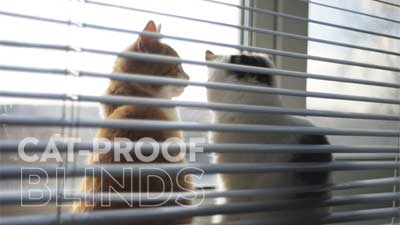Optimizing Your Cat's Exercise Routine: What's Ideal?

Cats, known for their agility, grace, and sometimes elusive nature, have exercise needs akin to their human companions. A sedentary lifestyle can negatively impact their physical and mental health, necessitating an understanding of how much exercise cats truly require and how best to provide for their needs.
How Much Exercise Do Cats Need?
The question of how much exercise a cat needs isn't straightforward; it's contingent upon various factors such as age, breed, lifestyle, and individual temperament. On average, cats benefit from around 30 minutes of exercise daily. However, this can significantly vary. For instance, kittens, brimming with energy, may engage in active play for an hour or more each day.
Kittens, in particular, lead the charge in play and activity, snoozing about 18 to 22 hours a day while staying actively engaged during their waking moments. To cater to their high energy levels, providing ample toys and play opportunities becomes paramount. Thankfully, with an array of engaging toys, kittens tend to instinctively fulfill their exercise requirements during play.
The Role of Exercise in a Cat's Well-being
Exercise plays a pivotal role in maintaining a cat's overall health. Both physical and mental benefits stem from regular exercise routines:
Physical Benefits
Exercise aids in calorie burning, weight management, and muscle toning. It serves as a preventive measure against obesity, diabetes, and arthritis, particularly vital for aging cats prone to muscle loss.
Mental Benefits
Beyond physical fitness, exercise provides mental stimulation crucial for a cat's well-being. It alleviates boredom, anxiety, and depression, thus curbing destructive behaviors. Interactive playtime fosters mental acuity and social interaction, benefiting a cat's psychological health.
Implementing Exercise for Your Cat
While outdoor cats naturally engage in activities like hunting and playing, indoor cats rely on environmental enrichment for their exercise needs. Incorporating various exercise options can ensure a fulfilling routine for your feline friend:
Interactive Cat Toys
From food, and puzzles to battery-operated toys, a myriad of interactive options caters to different play preferences. Some cats enjoy toys that dispense food, doubling as a mental and physical challenge.
Cat Trees
Indoor cat trees simulate an outdoor environment, offering climbing, scratching, lounging, and stretching opportunities. They serve as social hubs for multiple cats as well.
Wand Toys
Human-initiated play using wand toys fosters a strong bond between the cat and the owner. The feathered or dangling toys often evoke spirited play sessions.
Scratching Posts
Scratching posts and mats aren't just for nail maintenance; they allow cats to stretch and exercise their paws, akin to a feline yoga session.
Exercise Wheels
For more active cats, exercise wheels provide a stimulating outlet. However, it's crucial to ensure safety and proper space for installation.
Additionally, considering walks for cats trained with a leash and harness can add diversity to their exercise regimen.
Monitoring Your Cat's Exercise Needs
Understanding whether your cat is receiving adequate exercise involves observing its behavior and physical condition. Behavioral issues like destructive chewing, scratching, or erratic litter box habits might indicate a lack of stimulation. Weight gain or muscle atrophy can also suggest insufficient exercise.
However, it's imperative to recognize that individual cats exhibit diverse preferences. Some may not exhibit enthusiasm for typical play, which could signal an underlying health issue, such as pain or arthritis. Seeking a vet's opinion is advisable in such cases to rule out medical causes.
Conclusion
In summary, understanding and fulfilling a cat's exercise requirements are essential for their holistic well-being. Providing a stimulating environment with an array of toys and interactive activities tailored to individual preferences can ensure that your feline companion remains physically fit and mentally engaged.
By recognizing the significance of exercise in a cat's life and tailoring routines accordingly, owners can foster a healthier and happier existence for their beloved pets.
You May Also Like
 Toys and Accessories8 Best Toys and Accessories for Your Cat
Toys and Accessories8 Best Toys and Accessories for Your Cat Cat BehaviorWhy Do Cats Love To Climb Curtains?
Cat BehaviorWhy Do Cats Love To Climb Curtains? Cat-Proof Blinds8 Best Cat-Proof Blinds: Durable, Easy to Install, and Long-Lasting
Cat-Proof Blinds8 Best Cat-Proof Blinds: Durable, Easy to Install, and Long-Lasting Cat vs. Dog IQCat IQ vs. Dog IQ: Who's Smarter?
Cat vs. Dog IQCat IQ vs. Dog IQ: Who's Smarter? Cat HealthHow Much Thiamine Does A Cat Need Per Day?
Cat HealthHow Much Thiamine Does A Cat Need Per Day? Black and White CatsThe 10 Cutest "Black & White" Cat Breeds
Black and White CatsThe 10 Cutest "Black & White" Cat Breeds